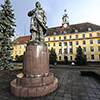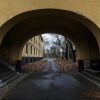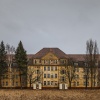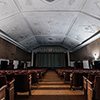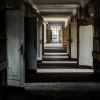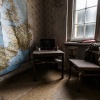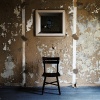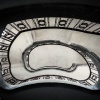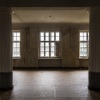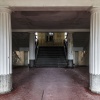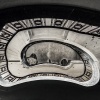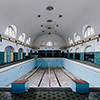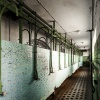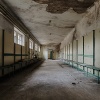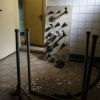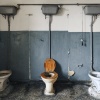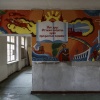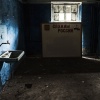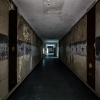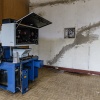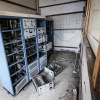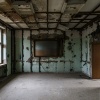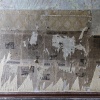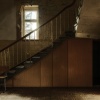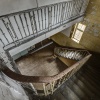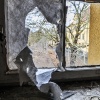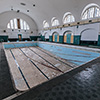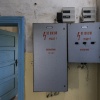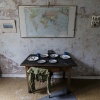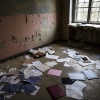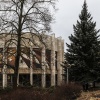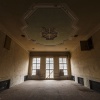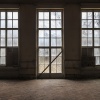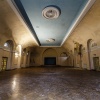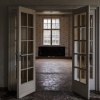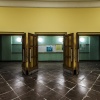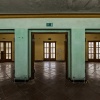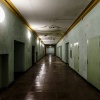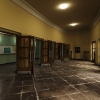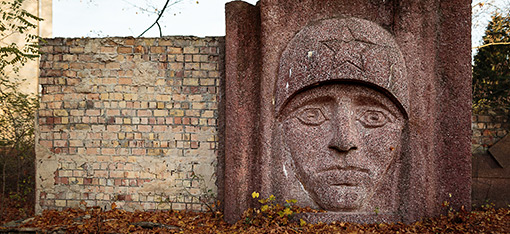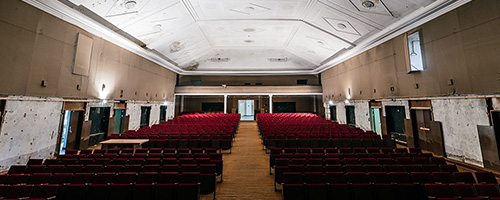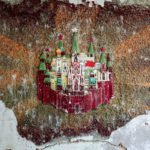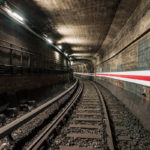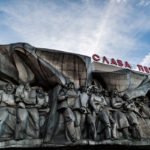East Germany’s Soviet Heritage – The mighty Wünsdorf garrison
Village of 6.000 souls versus military town with up to 75.000 soldiers – Back in the days the Soviets knew very well how to make use of Wünsdorf (Вюнсдорф), a settlement being located in Berlin’s south along the railroad leading to Dresden. Even if the whole territory is abandoned for several years now and completely fenced, it is possible to have a closer look at the heart of the complex, the today’s House of Officers, a building telling manifold stories of times when it was Army Sports School for the Nazi as well as even before for the emperor.
For GDR citizens Wünsdorf was a highly prohibited zone. Well, friendship among communists aside, people living there surely didn’t experience Wünsdorf in an all too different way before the Russians came since before 1945 and during two world wars it was a very important military area to the Nazis as well as to the imperial troops. Though only the Soviet’s restructured Wünsdorf and did that almost entirely as they occupied literally the whole territory to the east of the railroad and even broke into F96, the former federal road B96.
Germany was occupied for long time and when it comes to Berlin, things always became special. For means of rail-bound transportation each occupying power had a special train station for troop movements. The Brits used Charlottenburg, the French had Tegel, U.S.-American GIs travelled from Lichterfelde and the Soviets moved through Wünsdorf and until 1994 even a direct train to Moscow started there every day. The small town was of high importance as it accommodated the high command of GSFG, the Group of Soviet Forces in Germany.
Normally about 30.000 soldiers served and lived on the premises of the Soviet high command but when the Russians said goodbye in 1994 the place literally burst at the seams as it was home to even 75.000 men staying there at the same time. They left behind a territory being a couple of hundreds of hectares large and in particular the military training ground were severely polluted with unexploded ordnance, waste oil as well as scrap metal originating from vehicles and ammunition.
When the Soviets gave Wünsdorf back to reunited Germany the main buildings fortunately had a much better condition than the training grounds and it was Germany that let the premises fall victim to decay and devastation. In more than 20 years no one really cared about the estate, hence today, after having survived two world wars and three different regimes, the structure of the Wünsdorf military garrison buildings is racked by water seeping in and danger of collapse.
In particular the Diorama now crumbles into pieces. From the outside it looks like typical Soviet spacy concrete brutalism but inside it used to be an in detail World War II museum telling the story of the Soviet victory over Hitler’s Germany. When backing out of Germany the Russians offered the Diorama for little 100.000 Deutsche Mark, which got refused unfortunately. According to latest information the museum content itself got rebuilt in the town of Marshall Georgy Zhukov’s birth.
My photo series “East Germany’s Soviet Heritage” reflects my interest for history. Germany and Russia are nowadays as well as back in the days tighly connected and experienced moment of glory as well as agony. That’s exactly what this photo series shall reflect, not at evaluation, not as propaganda, but as a document and intellectual approach.
Most of the houses are shuttered and their unventilated inside smells like great grandma’s bedroom. In addition the basic structure of the buildings stores heat and cold very well, hence places like the theatre or culture hall are Mecca to fans of fungal infested microclimate. At the magnificent tiled indoor swimming pool spores fortunately take a backseat but become replaced by the ever-present smell of our ancestors’ sweat. To the south-west of the main buildings an area known as Infanterieschießschule (Infantry Shooting School) adjoins, an area being that large that I’ll need to come back to Wünsdorf for a second time… My company was Russian friend and photographer Victor Boyko.
